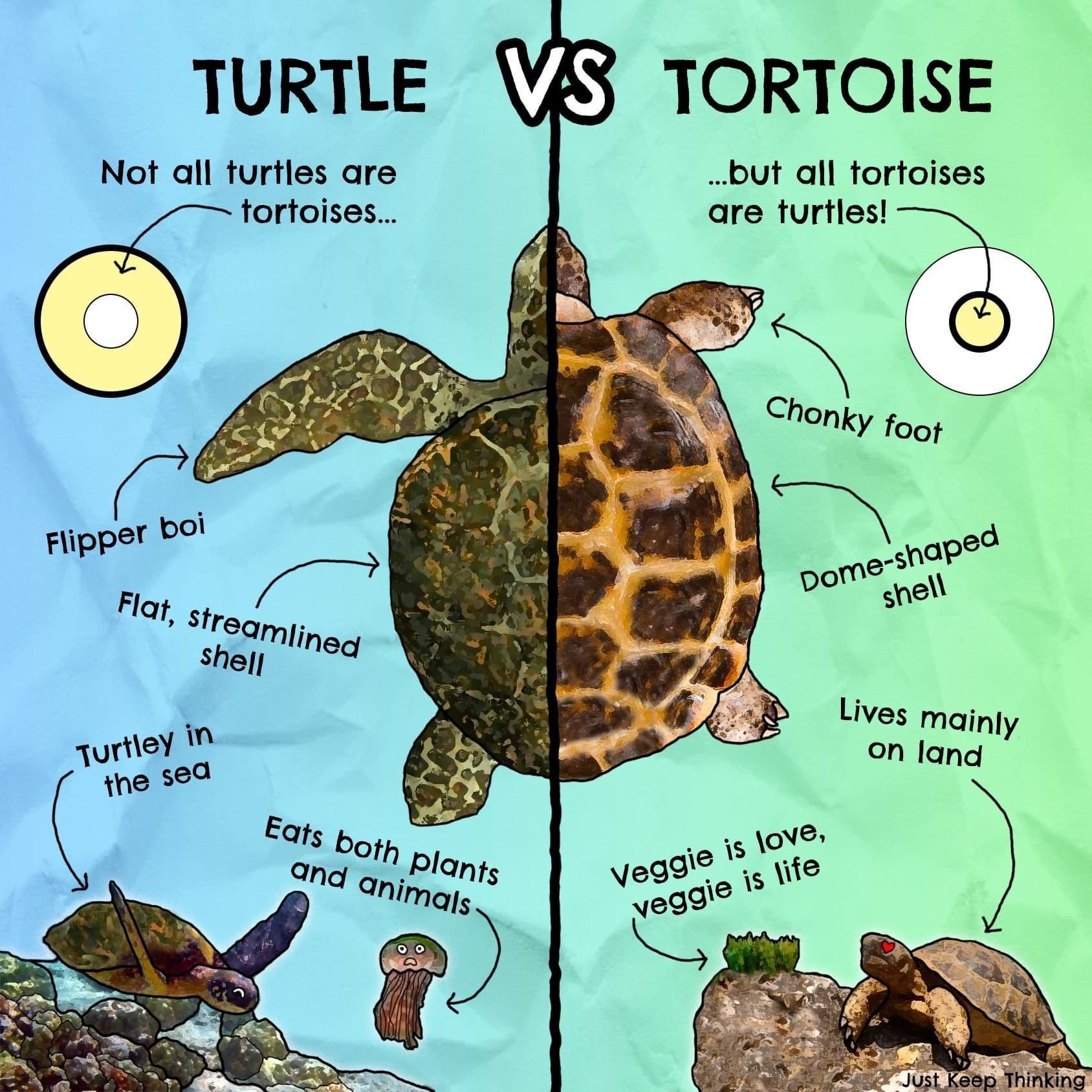When it comes to reptiles, turtles and tortoises are often confused with each other due to their similarities in appearance. However, these two creatures belong to different families and have distinct characteristics that set them apart. In this article, we will delve into the differences between turtles and tortoises to help you understand these fascinating creatures better.
Physical Characteristics
One of the main differences between turtles and tortoises lies in their physical characteristics. Turtles are adapted for life in water and have webbed feet or flippers for swimming. They also have streamlined bodies and are equipped with a lightweight shell that helps them float. In contrast, tortoises have stumpy feet with sharp claws for digging and are built for life on land. Their shells are heavier and domed, providing protection against predators.
Habitats
Another key difference between turtles and tortoises is their preferred habitats. Turtles are aquatic or semi-aquatic creatures and can be found in freshwater bodies such as rivers, lakes, and ponds. Some species of turtles also live in the ocean and only come ashore to lay their eggs. On the other hand, tortoises are terrestrial animals that inhabit dry, sandy areas like deserts and grasslands. They are well-adapted to arid environments and can go for long periods without water.
Diet
Turtles and tortoises also have different dietary preferences. Turtles are omnivores and feed on a variety of plants, insects, and small animals depending on their species. They are opportunistic feeders and will scavenge for food in their environment. In contrast, tortoises are mainly herbivores and consume a diet rich in vegetation such as grasses, leaves, and flowers. They have specialized beaks for grazing on plants and do not typically eat meat.
Behavior
When it comes to behavior, turtles and tortoises exhibit distinct traits based on their habitats. Turtles are known for their ability to swim gracefully in the water and may bask in the sun on rocks or logs to regulate their body temperature. They are also skilled at hiding in their shells when threatened by predators. In comparison, tortoises are more terrestrial and spend most of their time foraging for food on land. They are strong diggers and will burrow underground to escape extreme temperatures or predators.
Conservation Status
Both turtles and tortoises face threats to their survival due to habitat destruction, pollution, and poaching. Many species of turtles and tortoises are considered endangered or vulnerable according to the International Union for Conservation of Nature (IUCN) Red List. Conservation efforts are underway to protect these species and their habitats, including captive breeding programs, habitat restoration, and public awareness campaigns.
Conclusion
In conclusion, while turtles and tortoises may share some similarities in their appearance, they are distinct creatures with unique characteristics and behaviors. Understanding the differences between turtles and tortoises can help us appreciate and protect these fascinating reptiles for future generations to enjoy.
Next time you encounter a turtle or tortoise in the wild or at a conservation center, take a moment to observe these remarkable creatures and marvel at their diversity and resilience.
